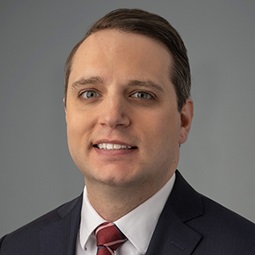“The decision we announce is no more far-reaching than this: when a federal court gives its approval to a plan that allows a party to put its hands into other people’s pockets, the ones with the pockets are entitled to be fully heard and to have their legitimate objections addressed.” – Judge Kent A. Jordan, writing for the majority, In re Global Indus. Techs., Inc., No. 08-3650, 2011 WL 1662792 (3d Cir. May 4, 2011).
The “pockets” in the above quote belong to certain liability insurers whose policies were assigned over their objection to a settlement trust created to assess and resolve prepetition silica claims asserted in the chapter 11 cases of Global Industrial Technologies, Inc. and certain of its subsidiaries. A divided U.S. Court of Appeals for the Third Circuit ruled that the liability insurers have standing to object to confirmation of the debtors’ chapter 11 plan of reorganization, even if the insurers’ ultimate liability on the silica claims is contingent and subject to coverage defenses.
This post is part of a two-part series on the use of other people’s money to fund claims against a debtor, and when that will give rise to standing for that party in the bankruptcy case. Today’s post discusses the Third Circuit’s decision in GIT and its implications for “parties in interest” in bankruptcy cases. In a subsequent post, we will address the Second Circuit’s take in In re Teligent, Inc. on the standing of a “potential debtor of a debtor of the estate,” whose pockets the Second Circuit found were not implicated by a settlement agreement that required a debtor’s former employee to sue that party and remit 50% of the net value of any recovery to the debtor’s estate.
GIT was involved in the manufacture and sale of refractory products. In the late 1990’s, GIT purchased a company, A.P. Green Industries, Inc., that also manufactured and sold refractory products and that had, over decades, incurred asbestos- and silica-related personal injury liabilities. As of its chapter 11 petition date, A.P. Green had one silica-related suit, a class action consisting of 169 claimants, pending against it in Texas state court.
In 2002, GIT, A.P. Green, and other related entities filed voluntary chapter 11 petitions, principally as a result of the debtors’ asbestos-related liability. The debtors did not identify their silica-related liability, however, as a precipitating factor in the debtors’ bankruptcy filing.
The debtors’ reorganization plan called for entry of a channeling injunction pursuant to section 524(g) of the Bankruptcy Code to direct asbestos-related claims against the debtors to a trust specifically created to assess and resolve the claims. The plan also called for entry of an injunction channeling silica-related claims to a separate silica trust pursuant to sections 105(a) and 1123(b)(6) of the Bankruptcy Code. The two trusts would be funded by insurance, in the form of a cash settlement of disputed obligations under the policies and/or by assignment of certain insurance policies that the debtors believed provided coverage for their liabilities.
To confirm a plan containing the asbestos trust, section 524(g) required that the debtors receive support for the asbestos trust from at least 75% of the asbestos claimants voting on the plan. In addition, to obtain approval of the channeling injunction for silica-related claims, Third Circuit precedent required that the debtors show the plan’s resolution of silica-related claims was necessary to the reorganization and fair. This meant that the silica-related liability had to be sufficiently onerous to jeopardize the debtors’ reorganization if not resolved through the channeling injunction and silica trust.
To solicit votes on the plan, the debtors reached out to the asbestos claimants’ counsel, many of whom also represented silica-related claimants asserting claims against other companies. The debtors also obtained a list of silica claimants from another company’s bankruptcy and then solicited votes from those claimants’ counsel. As a result, the number of silica-related claims in the debtors’ cases increased dramatically – over 5,000 silica-related claimants cast votes on the plan. Around five law firms accounted for the vast majority of the silica-related votes submitted. Each of the law firms that submitted votes on behalf of silica claimants also submitted votes on behalf of asbestos claimants. The requisite majorities of both groups of claimants voted in favor of the plan.
Certain insurers whose policies were to be assigned to the silica trust objected to confirmation of the plan. The plan purported to be “insurance neutral” by reserving insurers’ rights and defenses under the policies, except with respect to any anti-assignment provisions. In addition, the insurers’ coverage obligations would remain contingent on the trusts incurring liability, and a trust’s reimbursement of such claims would have to overcome any coverage defenses.
The objecting insurers asserted that the silica trust and injunction were products of the debtors’ collusion with asbestos claimants’ counsel and were not necessary to the reorganization. In essence, the objecting insurers alleged that GIT sold them out by setting up the silica trust and injunction in order to pay for “newly ginned-up silica claims” in exchange for the asbestos claimants’ votes in favor of the plan. The insurers also questioned the legitimacy of the silica-related claims. They alleged that the claimants obtained suspect diagnoses from certain physicians either “banned” from presenting evidence or singled out as unreliable in another large asbestos case. They cited a district court’s determination in a prior multi-district silica litigation that it was highly improbable that claimants could sustain both asbestos- and silica-related claims; in the GIT debtors’ cases, more than half of the silica claimants also filed an asbestos-related claim. The Third Circuit noted that, over the course of the confirmation hearings, the Delaware bankruptcy court heard evidence questioning 91.5% of the silica claims asserted against the debtors.
After continuing the confirmation hearing to solicit and consider additional information from the silica claimants, the bankruptcy court confirmed the debtors’ plan, concluding that the silica trust and injunction were necessary to the debtors’ successful reorganization. In overruling the insurers’ objections to confirmation of the plan, the bankruptcy court held that two of the objecting insurers lacked standing to challenge the plan because they had not suffered injury from the plan. First, the bankruptcy court determined that the assignment of the policies to the silica trust was not injurious because the Bankruptcy Code and state law rendered unenforceable the anti-assignment provisions in the policies. Second, the bankruptcy court reasoned that any potential financial harm arising out of the assignments was too speculative because the insurers had not contributed and were not required to contribute “anything” to the silica trust, and the insurers could assert their coverage defenses and contractual rights in the event they were called upon to contribute to the silica trust. The bankruptcy court’s decision was affirmed by the district court.
The Third Circuit reversed and remanded the case back to the bankruptcy court for further factual development. A six-judge majority of the appeals court, sitting en banc, held that the bankruptcy court should have allowed insurers to object to confirmation of GIT’s chapter 11 plan because the insurers also held a legally protected interest that could be affected by the plan.
At the outset, the GIT majority noted that, although both standing to object to the bankruptcy plan in bankruptcy court (“bankruptcy standing”) and standing to appeal the confirmation order (“appellate standing”) were contested, the court need only address the insurers’ bankruptcy standing in order to dispose of the appeal, as the appropriate remedy was to remand the case back to the bankruptcy court to consider the insurers’ objections, and the disposition on remand could alter the analysis.
The majority went on to address the bankruptcy standing of the insurers. To have standing in bankruptcy proceedings, a party must meet the constitutional requirements for all litigants in federal cases, as well as the standing requirements of the Bankruptcy Code. The GIT majority summarized the requirements as follows:
A party seeking constitutional standing must demonstrate an “injury in fact” that is “concrete,” “distinct and palpable,” and “actual or imminent.” Additionally, the party must establish that the injury “fairly can be traced to the challenged action and is likely to be redressed by a favorable decision.”
…
Standing in bankruptcy cases is also governed by the terms of 11 U.S.C. § 1109(b) . . . . The United States Court of Appeals for the Seventh Circuit has described a party in interest as “anyone who has a legally protected interest that could be affected by a bankruptcy proceeding.” That “party in interest” test comports with our own definition of a “party in interest” as one who “has a sufficient stake in the proceeding so as to require representation.”
According to the Third Circuit, the constitutional injury-in-fact requirement and standing requirements under the Bankruptcy Code are coextensive; that is, the “party in interest” requirement is not “an additional obstacle” to bankruptcy standing. Thus, the Third Circuit considered whether the two objecting insurers had “legally protected interests that could be affected by the [debtors’] plan.”
The majority found the plan’s alleged adverse impact on the insurers was not too speculative for them to be parties in interest. Even though the plan preserved the insurers’ coverage defenses under the subject policies and did not guarantee claimants any payout, the majority determined the plan was not “insurance neutral.” The majority distinguished In re Combustion Engineering, Inc., 391 F.3d 190 (3d Cir. 2004), in which the Third Circuit concluded that certain objecting insurers lacked standing to challenge a debtor’s plan that assigned certain insurance policies to an asbestos trust because the plan did not impair the insurers’ contractual rights under the policies at issue and did not increase their prepetition obligations under the policies. The Combustion Engineering plan was “insurance neutral” because it “[did] not materially alter the quantum of liability that the insurers would be called to absorb.” In contrast, the GIT majority reasoned that the debtors’ plan would adversely affect the objecting insurers because the creation of the silica trust increased the silica-related claims asserted in the case by more than 27 times the prepetition liability exposure. (The GIT majority compared this to the 25,000-30,000 claims asserted during plan negotiations in Combustion Engineering, where hundreds of thousands of claims had been asserted against the company over the four decades prior to its filing.) In short, notwithstanding the preservation of their coverage defenses, the increase in claims against the insurers constituted a “tangible disadvantage” to the insurers because of the expanded coverage obligations and administrative costs of investigating the claims; therefore, the insurers’ injuries were not speculative.
Importantly, the majority appears quite influenced by the “nonfrivolous allegations of collusion between GIT and the asbestos claimants’ counsel” in establishing the silica trust and injunction in order to manufacture liability for the debtors’ benefit, which allegations called into question the integrity of the bankruptcy proceeding and were unlikely to be raised by anyone but the insurers. Given these circumstances, the majority held that the objecting insurers were entitled to appear as parties in interest in the confirmation hearing. On remand, the Third Circuit instructed the bankruptcy court to conduct a more searching review of the allegations of collusion between the debtors and counsel for the silica claimants and make sufficient findings for any further determination on appeal.
Four judges dissented. The dissent not only disagreed with the majority’s holding, but cited “alarming consequences” for future cases. First, the dissent rejected the majority’s conclusion that the insurers had demonstrated an injury in fact. The dissent found it dispositive that the debtors’ plan included language that mirrored plan provisions in the Combustion Engineering case, which the Third Circuit had characterized as “insurance neutral,” and that left the terms of their contractual obligations – except for the anti-assignment provisions – unaltered. Even in a worst-case scenario, the dissent concluded that the insurers retained the full range of contractual rights for which they bargained at the inception of the insurance contracts. Second, the dissent viewed the majority’s decision as a departure from well-established precedent regarding injury in fact, and an expansion of Article III standing. As Judge Nygaard wrote, “That at some point in the future, the scope of coverage determined by an insurer at a policy’s inception may include liabilities that the insurer failed to consider when it priced the policy is of no moment to the bankruptcy proceedings.” Expenses incurred in evaluating claims and litigating denied claims, which the majority identified as constituting a “tangible disadvantage” to the insurers, was par for the course for insurers, according to the dissent. Third, the dissent rejected any notion that the bankruptcy court’s proceedings were any less than thorough. The dissent pointed out that the insurers had fully participated in the development of the record, amassed over five years. The bankruptcy court had investigated the facial legitimacy of the silica claims filed in the case and was fully aware of past abuse of silicosis claims in other unrelated cases. In short, the dissent characterized the majority’s grant of standing to parties with no injury – either actual or contingent – as a needless delay to an already protracted proceeding.
Insurers are likely to cite the decision as support for their party in interest standing in mass tort bankruptcies, especially where a debtor could reach into insurers’ pockets to fund a claims trust. It is not clear, however, whether GIT will be limited to its facts. The majority appeared especially influenced by the insurers’ allegations that the integrity of the bankruptcy process had been compromised, and the claims against the debtors increased substantially after solicitation of votes on the plan had commenced. In other cases with mass tort liabilities, prepetition claims may have a longer history and the litigation surrounding such claims might be more fully developed such that channeling such claims out of the tort system and into a settlement trust might not materially affect an insurer’s prepetition exposure to liability. In addition, the decision may be of greater significance to non-asbestos mass tort bankruptcies, given that Congress has specifically addressed asbestos claims in certain Bankruptcy Code provisions.














